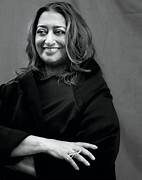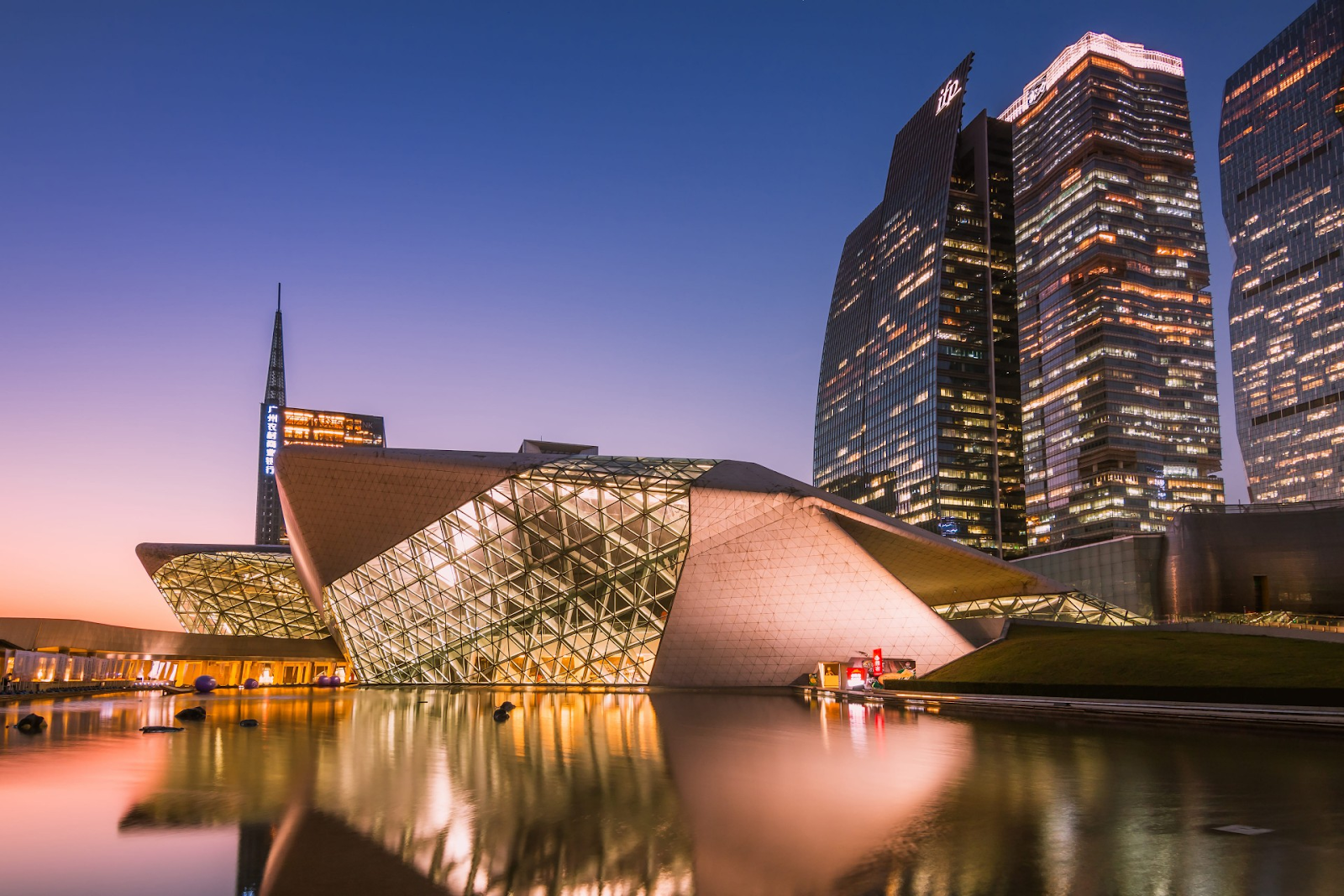Zaha Hadid (1950–2016): A Visionary Architect
ZAHA HADID(ARCHITECT)Zaha Hadid was an Iraqi-British architect known for her groundbreaking, futuristic designs that defied conventions in architecture. Born in Baghdad, Iraq, on October 31, 1950, she went on to become one of the most influential architects of her time. Hadid was the first woman to receive the Pritzker Architecture Prize in 2004, which is often considered the Nobel Prize of architecture.
Her work is characterized by sweeping curves, fluid forms, and innovative materials, creating structures that seem to float or move with organic grace. Some of her most notable projects include: -
.The London Aquatics Centre (2012) for the Olympic Games.
London Aquatics Centre for 2012 Summer Olympics / Zaha Hadid Architects.The Guangzhou Opera House in China (2010).
Guangzhou Opera House: storia dell’auditorium sul fiume
.The Heydar Aliyev Cultural Center in Baku, Azerbaijan (2012), which won numerous awards for its complex, undulating design.
Zaha Hadid: Heydar Aliyev Cultural Center, Baku-Azerbaijan.MAXXI the National Museum of 21st Century Arts in Rome, Italy, which earned her the prestigious Stirling Prize in 2010.
zaha hadid's MAXXI wins the 2010 stirling prize
Zaha Hadid also designed furniture, shoes, and interior spaces, pushing the boundaries of form in every medium. Her firm, Zaha Hadid Architects, continues to operate, furthering her legacy of innovative, bold, and visionary architecture.
Zaha Hadid passed away on March 31, 2016, but her impact on global architecture remains profound, as she opened doors for women and non-Western architects in the predominantly male and Eurocentric field of architecture. --- If you were referring to someone else, please provide more context or details.
Some Questions About zaha Hadid Are :
WHY SHE IS IMPORTANT?
- Her career shows the importance of following one’s radical vision. Students can be inspired by her groundbreaking aesthetic and how she expanded the possibilities of architecture worldwide. Zaha Hadid, born in Baghdad, Iraq, in 1950, was a revolutionary architect who left an indelible mark on contemporary architecture.
What can students learn from Zaha Hadid?
- Students can be inspired by her groundbreaking aesthetic and how she expanded the possibilities of architecture worldwide. Zaha Hadid, born in Baghdad, Iraq, in 1950, was a revolutionary architect who left an indelible mark on contemporary architecture. She began her education in
What is Zaha Hadid architecture?
- Zaha Hadid’s architecture represents styles combining Deconstructivism, Suprematism, and Parametricism. Her designs are characterized by dramatic, fragmented geometry with sweeping curves and fluid forms that challenge traditional notions of architectural space.
Where is Zaha Hadid based?
- Her architectural design firm, Zaha Hadid Architects, employs 400 people and its headquarters are in a Victorian former-school building in Clerkenwell, London. [ 142] MAXXI – National Museum of the 21st Century Arts (1998–2010), Rome, Italy. [ 143] Stirling Prize 2010 winner.
The Creative Process of Zaha Hadid, As Revealed Through Her Painting

Internationally renowned for her avant-garde search for architectural proposals that reflect modern living, Zaha Hadid made abstract topographical studies for many of her projects, intervening with fluid, flexible and expressive works that evoke the dynamism of contemporary urban life.
In order to further knowledge of her creative process and the development of her professional projects, here we have made a historic selection of her paintings which expand the field of architectural exploration through abstract exercises in three dimensions. These artistic works propose a new and different world view, questioning the physical constraints of design, and showing the creative underpinnings of her career.

What Were Zaha Hadid's Early Inspirations?
From the beginning of her career Zaha Hadid was influenced by the artist Kazimir Malevich, who led her to use paint as a tool for architectonic exploration. During the 1980s, before Zaha had realized any of her works, she was faced with many fruitful years of theoretical architectural design. In these years she created a precedent for her entire career, with these explorations later consolidated in material form in her works.

I was very fascinated by abstraction and how it really could lead to abstracting plans, moving away from certain dogmas about what architecture is.

Hadid began her paintings with essays in a macro urban scale, exploring proposals for masterplans and forms of connection within and between cities. In her paintings of "The Peak," Hadid proposed a landmark as a respite from the congestion and intensity of Hong Kong, developed on an artificial mountain.
_PA_01.jpg?1472565216)
In "The World (89 degrees)" the architect explored the multiple capabilities of new technologies and their impact on architectural design, producing an abstract composition—almost like a satellite view of the world. Using only sharp angles that give dynamism to the view, the plan is crossed by a wide curved horizon which in its movement embodies the constant change in contemporary lifestyles.

Hadid also used this graphic research to rethink existing urban spaces, as in the case of "Grand Buildings Trafalgar Square." In this painting, in addition to inserting a public podium recognizing the tradition of public meetings in the square, Hadid introduced tall buildings with public terraces, whose height would correspond with various landmarks in the city.


Entering into a public competition to design an urban development plan for what was at the time West Berlin, in "Victoria City Aerial" Hadid intervened with an urban context organized around programmatic corridors at different heights that would inject commerce and culture into the area.



The Hafenstrasse development was designed by Hadid to fill intermediate spaces in a zone of traditional vertical housing in Hamburg, Germany. The graphic essays propose a succession of permeable constructions with terraces that connect to the river Elbe.



In 1992 Zaha Hadid was called on to develop a collection of paintings and drawings for "The Great Utopia," an exhibition on Russian Constructivism at the Guggenheim Museum in New York. In response, Hadid realized an interpretation of Vladimir Tatlin's Monument to the Third International (1919-1920), in addition to experimenting with recreations of other Russian artists such as Kazimir Malevich.


In her studies for the Vitra Fire Station, Hadid's paintings materialize and freeze the movement of the work, tracing the plan's emerging and inter-connected walls, and giving a sensation of suspense before imminent movement











_PA_01.jpg?1472565216)




























.jpg?1472582136)
.jpg?1472582122)











![Terry Farrell [ British architect]](https://blogger.googleusercontent.com/img/b/R29vZ2xl/AVvXsEgF5Bc7-F6oyGHwVlcJfUVoN9PAph8ZIAQAVTMDZ0oOX0kIENEGN84Arj8wxKS666_yV2hRHMM4zlJ5gCJFBA1ttvrGBPrCNY0tZWfcuPl0aolt_szKpBjWtbLYutI4ivHBLrzZkj-wEk_l_1paoEEVkgnzCt7yvpHoDkhm63TxHxL45GUgV2OZVkwLYkWG/w100/11e81b6d-862f-4a23-a2d0-950d22063de0.png)



0 Comments